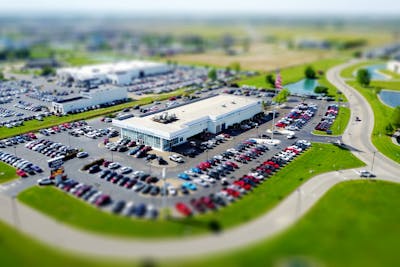Unveiling the Research and Development of a Product : The Journey of Innovation


The research and development of a product is a critical process that transforms innovative ideas into market-ready solutions. This journey is essential for businesses aiming to stay competitive and meet evolving consumer demands. By following a structured research and development process, companies can ensure their products are well-researched, tested, and poised for a successful market launch.
Step-by-Step Guide to the Research and Development of a Product
1. Idea Generation
Idea generation is the foundational step in the research and development of a product. It involves brainstorming and conceptualizing potential product ideas that address specific market needs or solve existing problems. This stage encourages creativity and innovation, allowing teams to explore various possibilities without immediate constraints.
Companies like Apple excel in idea generation by continuously exploring emerging technologies and consumer trends. The development of the iPhone, for instance, was born from the idea of integrating communication, entertainment, and computing into a single, user-friendly device.
2. Market Research
Market research is essential to validate your product idea within the research and development process. It involves gathering and analyzing data about your target audience, competitors, and market conditions. This step ensures there is a genuine demand for your product and helps refine its features to better meet consumer needs.
Before launching Tesla’s electric cars, the company conducted extensive market research to understand the automotive market’s shift towards sustainability. They identified a growing demand for eco-friendly vehicles, which guided their product development strategy.
3. Feasibility Analysis
Feasibility analysis assesses the practicality of your product idea from both technical and financial perspectives. This involves evaluating whether the necessary technology is available, estimating production costs, and analyzing potential returns on investment. A thorough feasibility analysis helps determine if the product is viable and worth pursuing.
In the pharmaceutical industry, companies perform feasibility analyses to ensure they can develop effective drugs within budget constraints. This includes evaluating the availability of necessary technologies and estimating the costs involved in research, testing, and production.
4. Concept Development
Concept development involves defining the core aspects of your product, including its features, benefits, and specifications. This step transforms abstract ideas into concrete plans, ensuring the product concept aligns with market needs identified during the research phase. Detailed sketches, models, or digital prototypes are often created to visualize the product.
Dyson’s bladeless fan is a result of meticulous concept development. The company focused on creating a safer, quieter, and more energy-efficient alternative to traditional fans, ensuring the product concept addressed specific consumer pain points.
5. Prototyping
Prototyping is the process of creating an early version of your product to test its functionality and design. This tangible model allows developers to identify potential issues, make adjustments, and refine the product before moving to mass production. Prototyping is a crucial step in the research and development of a product as it bridges the gap between concept and reality.
LEGO develops prototypes of new toy sets to evaluate their playability and durability. This hands-on approach helps them identify design flaws and improve the product before it reaches the market.
6. Testing and Validation
Testing and validation involve rigorous evaluation of the prototype to ensure it meets quality and performance standards. This step includes user trials, stress tests, and other assessments to identify any flaws or areas for improvement. Feedback from these tests is critical for refining the product to better meet consumer expectations.
Apple extensively tests the Apple Watch for durability, battery life, and usability before its release. This thorough testing process ensures that the final product meets the high standards expected by consumers.
7. Iteration
Iteration is the process of refining the product based on feedback and test results. This may involve multiple cycles of adjustments to the design, functionality, or user experience. The goal is to perfect the product, addressing any issues uncovered during testing to ensure it is ready for the market.
Software companies like Microsoft release beta versions of new operating systems to gather user feedback. This iterative process allows them to make necessary improvements before the final launch, ensuring a more polished and user-friendly product.
8. Finalization
Finalization involves preparing the product for mass production. This step includes finalizing the design, selecting materials, and setting up manufacturing processes. Ensuring that all components are ready and that the production line is efficient is crucial for a smooth transition from development to market.
IKEA finalizes their furniture designs by selecting durable materials and optimizing manufacturing processes. This meticulous finalization ensures that their products are both high-quality and cost-effective for mass production.
9. Market Launch
The market launch is the culmination of the research and development process, where the product is introduced to the market. This step involves strategic planning, including developing marketing campaigns, creating promotional materials, and establishing distribution channels. A successful launch ensures that the product reaches its target audience effectively.
Nike employs strategic marketing campaigns and influencer partnerships to create buzz around new product launches. This approach helps ensure that their products gain significant visibility and reach the intended consumers effectively.
10. Post-Launch Review and Innovation
Post-launch activities involve monitoring the product’s performance in the market and gathering customer feedback. This ongoing evaluation helps identify areas for improvement and opportunities for innovation. Continuous improvement ensures that the product remains relevant and competitive over time.
Samsung regularly updates its Galaxy smartphones based on user feedback and technological advancements. This commitment to post-launch innovation helps them stay ahead in the highly competitive smartphone market.
By following these detailed steps, businesses can navigate the complex journey of the research and development of a product with confidence. This structured approach ensures that each phase is meticulously planned and executed, resulting in a well-researched, tested, and market-ready product.
For those interested in embarking on their entrepreneurial journey, I recommend reading the comprehensive guide on How to Start a Business: Guide for Aspiring Entrepreneurs, which offers valuable insights into launching and growing a successful business.



Post Comment